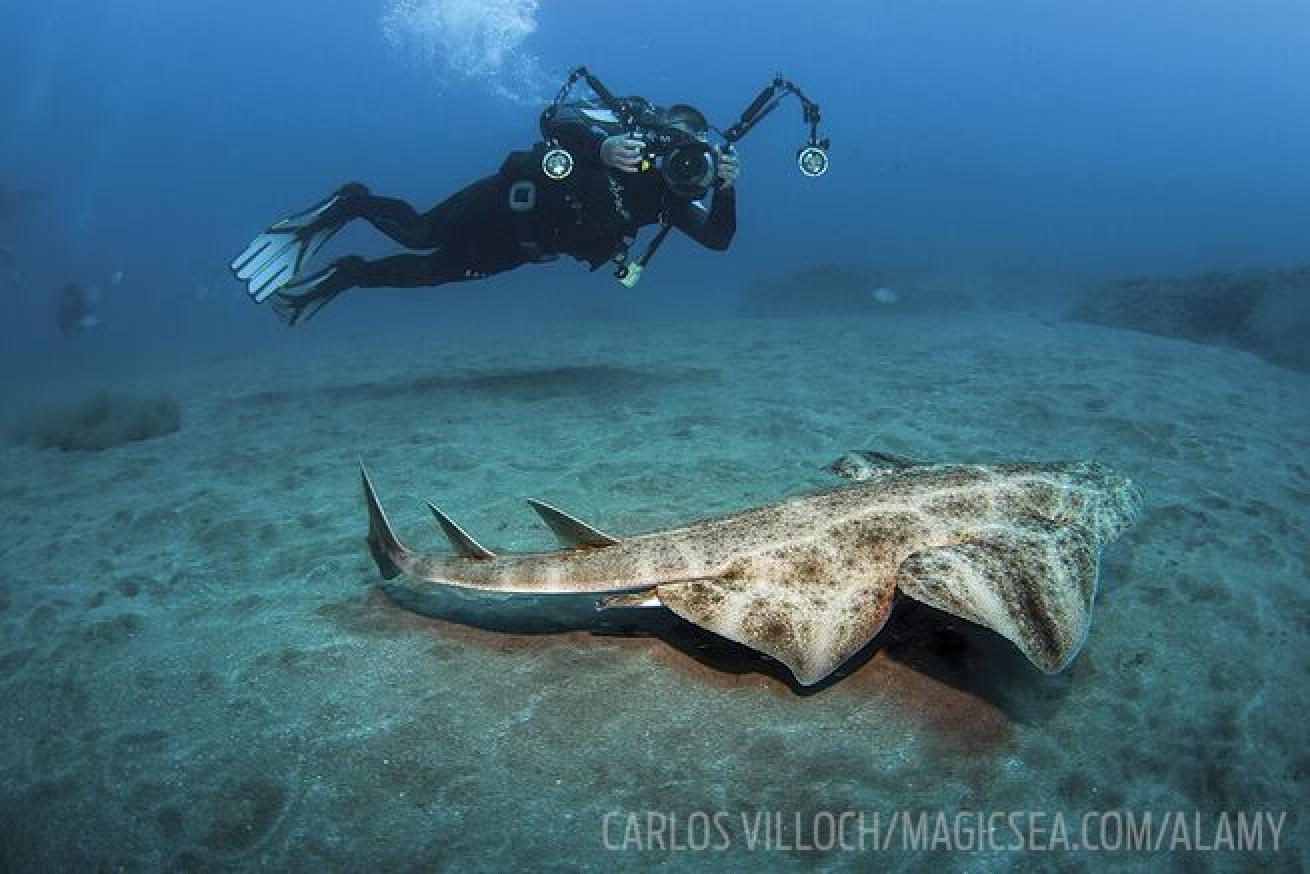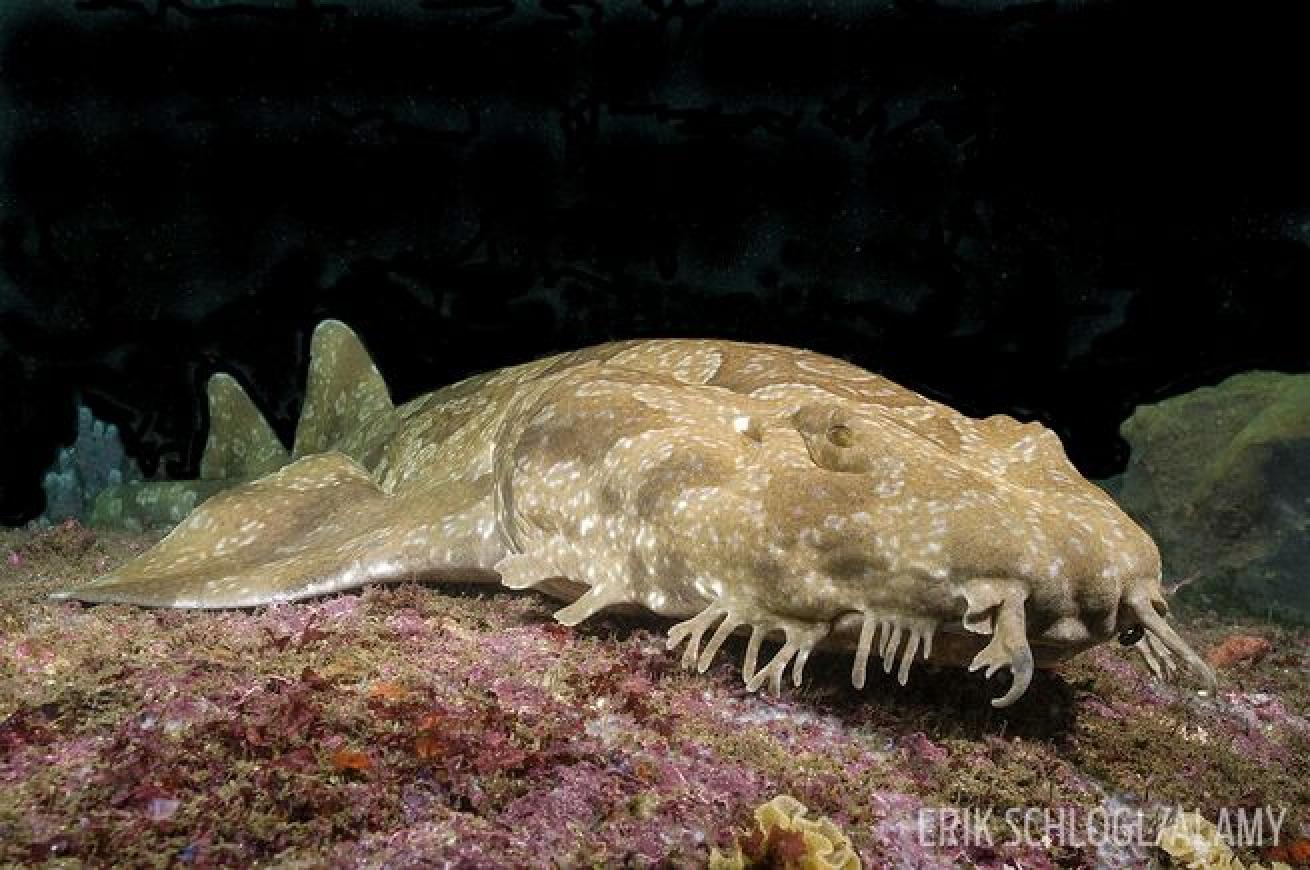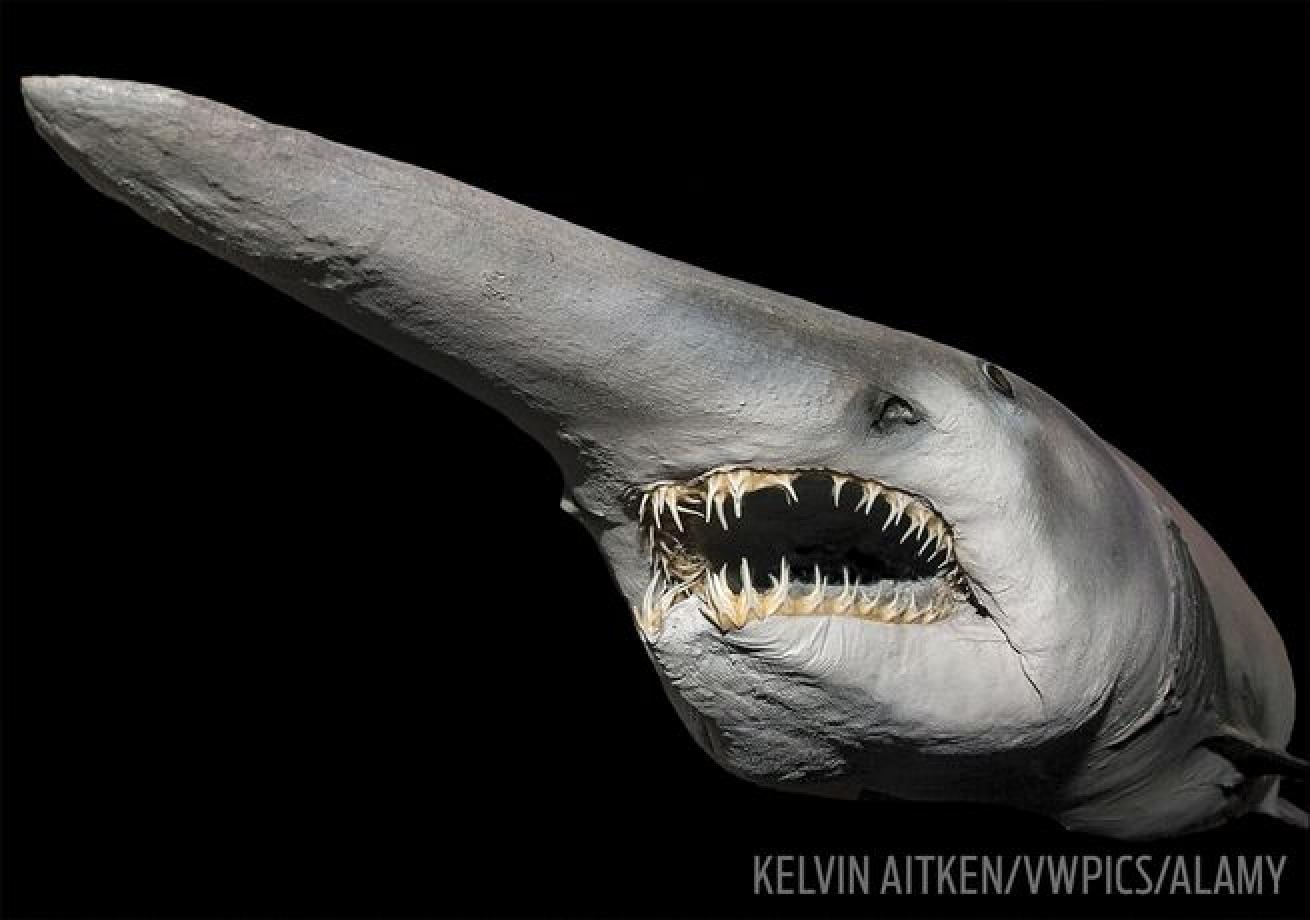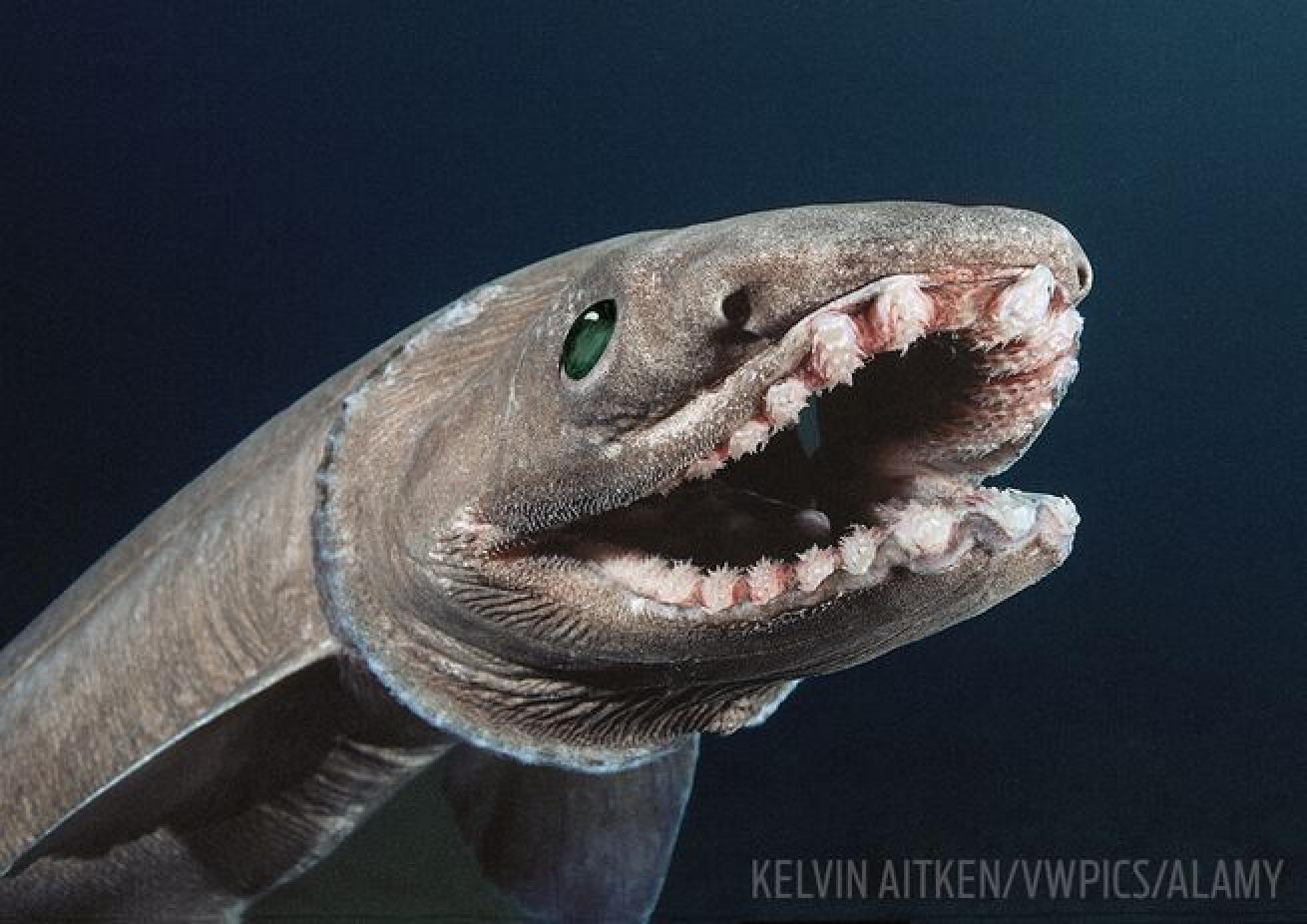Six of the Weirdest Sharks in the Ocean
We scuba divers don’t need an introduction to great white, hammerhead and whale sharks. But of the more than 500 species of sharks in the ocean, here are six whose acquaintance many haven’t made.
Angelshark

Carlos Villoch/magicsea.com/AlamyAn angelshark, which usually lies buried in sediment, is a nocturnal ambush predator.
Listed as critically endangered by the International Union for Conservation of Nature, the angelshark (Squatina squatina), or monkfish, is no longer found in many northeastern Atlantic and Mediterranean spots where it was once common. An angelshark usually lies buried in sediment, with only its eyes showing. Mother Nature knew what she was doing — a nighttime hunter, this well-camouflaged shark waits patiently to surprise its favorite prey, bottom-dwelling skates and invertebrates. Generally not aggressive, angelsharks can deliver a bite if they feel harassed or threatened.
Spotted Wobbegong Shark

Erik Schlogl/AlamyThe wobbegong shark — which is nearly invisible when it hides among rocks — ambushes smaller fish when they swim by.
Like the angelshark, this sluggish carpet shark (Orectolobus maculatus) depends on camouflage for its nocturnal sneak attacks on prey. While it resembles the 11 other wobbegong species in its family, the spotted’s pattern of coloration — a golden-sand to light-green color that’s marked by a dark saddle across its body, and irregularly shaped white rings — is distinct. Native to the western Pacific, the wobbegong’s name comes from the Australian Aboriginal word for “shaggy beard.”
Related Reading: How Captive Breeding is Helping Shark Conservation
Goblin Shark

Kelvin Aitken/VWPics/AlamyScientists say that because the goblin shark’s snout is relatively soft, it is unlikely to be used for stirring up prey from the bottom. as has had been previously theorized. Instead, they say the snout has a sensory function, as it has numerous ampullae of Lorenzini that can detect the weak electric fields produced by other animals.
Look up the term “living fossil,” and you’ll conclude the deepwater goblin shark (Mitsukurina owstoni) is a good example. It can trace its lineage back 125 million years and inhabits water in depths — 330 feet and deeper — to which recreational scuba divers don’t venture. With its sword-blade snout and dozens of rows of higgledy-piggledy, nail-like teeth, this shark has a face only its mother — and those who love the creatures of the ocean — could love.
Frill Shark

Kelvin Aitken/VWPics/AlamyScientists think the frilled shark may capture prey by bending its body and lunging forward like a snake, and then swallowing its victim whole.
We wouldn't be surprised if the monster under your childhood bed resembled the eellike frilled shark (Chlamydoselachus anguineus). Its fearsome looks are the stuff of nightmares: Its mouth is crammed with 25 rows of backward-facing trident-shaped teeth — 300 in all — that are perfect for snagging terrified children. Of course, the frilled shark doesn’t eat children; in fact, human sightings are as rare as spotting a white peacock, baby bongo or blue flamingo. We don’t know much about this shark; that’s because it carries on its mysterious life in inky-black waters as deep as 1,500 feet.
Related Reading: How to Photograph Pelagic Sharks
Megamouth Shark

Biosphoto/AlamyThe megamouth shark has a stout body and a long, wide bulbous head. Because of their large mouth, small teeth, and rounded snout, they've sometimes been mistakenly identified as orcas.
Whale sharks and basking sharks get all the press, but this filter feeder is in a class all its own — literally. It’s the sole species in the distinct family Megachasmidae. The megamouth (Megachasma pelagios) wasn’t even discovered until 1976, when a U.S. Navy research vessel hauled up an adult male off the coast of Oahu, Hawaii, making it one of the more sensational discoveries in 20th-century ichthyology. There have been fewer than 100 sightings, but they do come to the ocean’s surface to suck up krill, so while rare, it’s not impossible to encounter one.
Horn Shark

Mark Conlin/AlamyThe horn shark, which is a clumsy swimmer that prefers to use its flexible, muscular pectoral fins to push itself along the bottom, will move quickly if disturbed.
Every once in a while, you might spot a horn shark (Heterodontus francisci) with a purple grill, a result of eating too many sea urchins, one of its favorite meals. This spotted shark’s name derives from the ridges behind its eyes; each dorsal fin has a spike. When they move, it looks like they’re flapping their fins like a bird, but they’re slow, bottom-dwelling swimmers, often resting on the sand or in aquatic plants. Found along the North American west coast, horn sharks are known to be homebodies that don’t travel more than 10 miles. They are perhaps best known for their beautiful, spiral-shaped egg cases, which females wedge between rocks in the springtime.










